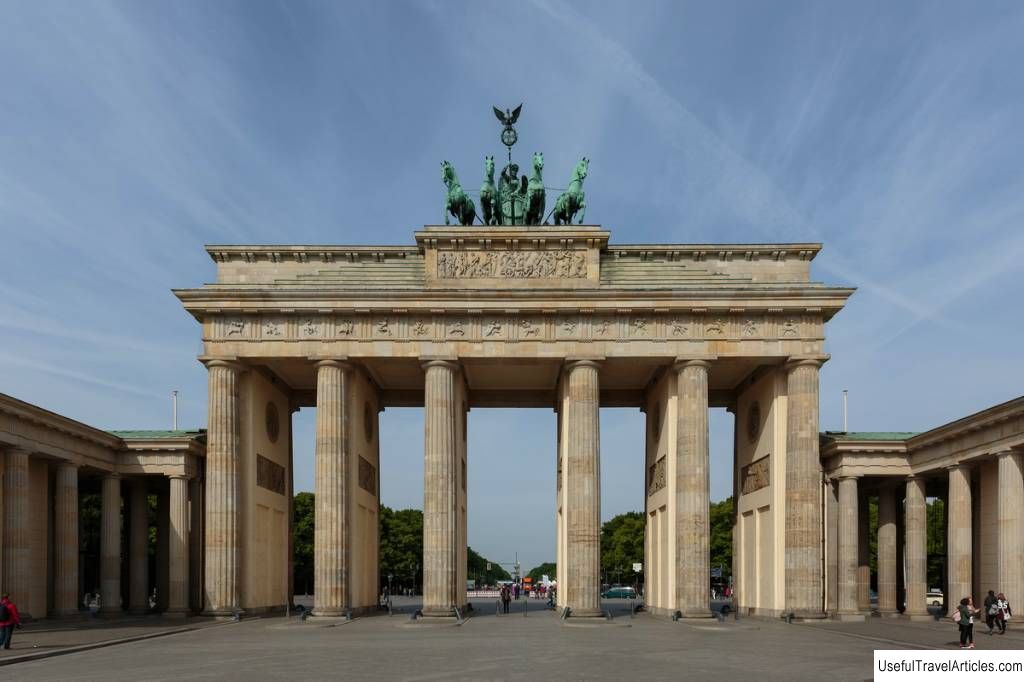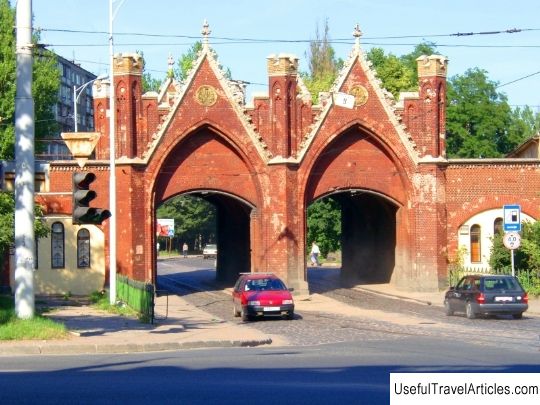Brandenburger Tor description and photos - Germany: Berlin

Brandenburger Tor description and photos - Germany: Berlin. Detailed information about the attraction. Description, photographs and a map showing the nearest significant objects. The name in English is Brandenburger Tor. Photo and descriptionThe Brandenburg Gate is an architectural monument located in the central Mitte district of Berlin on the Pariserplatz square. In 1688, the walled city of Berlin had several gates in the surrounding fortress wall. After the Thirty Years War, the city began to grow, in this regard, new city walls were built - first from wood, and then from stone, to give a single style. The Brandenburg Gate was part of the customs system of the city at that time - a wall with a gate, where merchants paid duties. Exterior of the Brandenburg GateThe author of the Brandenburg Gate arch is the master of architecture Karl Gotthard von Langgans. They were made by order of Frederick Wilhelm II in 1781-1791 in the ancient Greek style - copied from the arch of the Propylaea in the Parthenon. The gate is made of stone clad with light sandstone, which changed its color under the influence of time. The base of the gate consists of twelve columns in two rows, forming a wider central opening and two identical openings on both sides. The height of the Brandenburg Gate is 26 meters, the length is about 66 meters, the total thickness of the colonnades is 11 meters. A sculptural composition is installed on the ceiling - the winged goddess of victory Victoria, ruling a cart with four horses. The central passage was intended for the passage of royalty and ambassadors of foreign powers; side passages were open for the rest of the townspeople and guests. There are annexes on each side of the arch, in which statues of the god of war Mars and the goddess of wisdom Minerva are installed. It is worth noting that the gate was originally called the Gate of the World, and four horses carried the goddess of peace Irene with an olive branch - the work of Johann Gottfried Shadov. After Berlin was surrendered to Napoleon's troops in 1806, the quadriga was transported to Paris, and after the victory over the French in 1814, it was solemnly returned to its place, but already converted by Friedrich Schinkel in the form of the chariot of the goddess Victoria, with the Order of the Iron Cross in hand. XX century and modernityIn 1918-20, columns of soldiers passed through the central passage of the gate, in the 30s the Brandenburg Gate was a decoration for torchlight processions, rallies and parades National Socialists. During the Second World War, most of the buildings on the Pariserplatz were completely destroyed. The Brandenburg Gate, like many architectural monuments, was badly damaged, and the quadriga was destroyed, because the fascist regime made every effort to make its symbol out of the composition. In 1945, a red flag fluttered at the top of the gate, which was removed in 1957. The restoration of the gate was carried out jointly by the governments of West and East Berlin, the quadriga was restored, and passage through the main arch was allowed. When the Berlin Wall was erected overnight in 1961, the Brandenburg Gate was closed to residents of both parts of the city. Access from the GDR side was closed by special barriers. Until the fall of the Berlin Wall in 1989, the Brandenburg Gate remained a closed monument. After a long break, Helmut Kohl was the first to enter the main passage. The Quadriga was again hit hard, this time by a tumultuous celebration of the fall of the Berlin Wall and the unification of the country. The sculptural group was restored to its original form based on the old prints found. The last restoration of the gate took place in 2000-2002. Due to traffic fumes, the gate required painting. The Berliners were asked to choose a color by presenting four miniature copies painted in different colors. According to the results of the voting, the white man won. At present, traffic is prohibited in part of the square, as well as through the arch of the gate. Tips
            We also recommend reading Scientific Geological Museum named after A. A. Chernova description and photo - Russia - North-West: Syktyvkar Topic: Brandenburger Tor description and photos - Germany: Berlin. |




